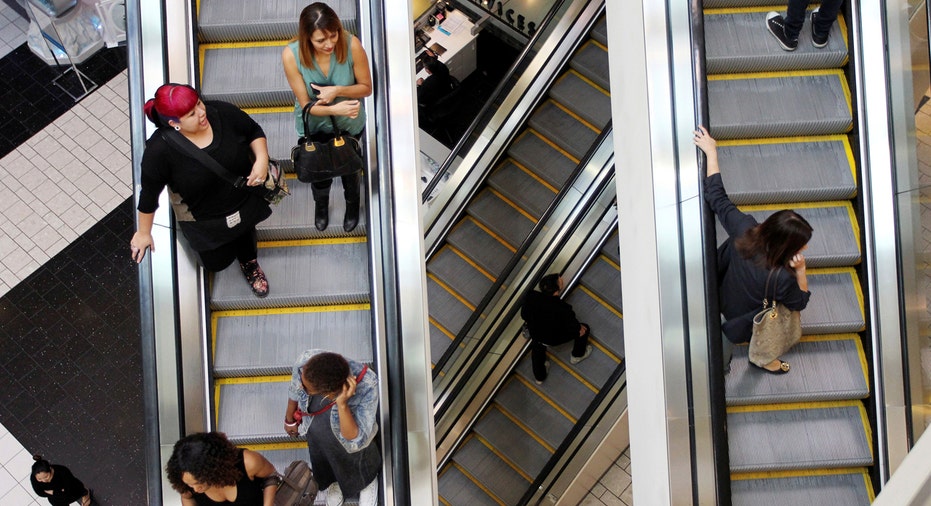Consumer Spending Cools Despite Robust Sentiment Surveys

Consumers say they’re optimistic about the economy and willing to spend their hard-earned dollars, but a duo of consumer data out Friday morning showed as prices dipped in March, actual spending didn’t quite keep up with sentiment.
The Labor Department’s consumer price index (CPI) slipped a seasonally-adjusted 0.3% last month, the first one-month decrease since February 2016. A 6.2% drop in the gasoline index weighed the most, while spending on food at home rose 0.5% during the period. Excluding the volatile food and energy components, core CPI slipped 0.1%, versus to a 0.2% expected gain. Compared to last year, prices rose 2.4%, but still missed their 2.6% target, notching the smallest 12-month increase since November 2015, the latest sign that inflation pressures may be cooling.
The Federal Reserve – which has its eye on at least two more rate rises this year so long as the labor market continues to tighten and inflation rises – is keenly watching changes in inflation since it’s been slow to grow despite continued U.S. economic improvement since the financial crisis. The personal consumption expenditures (PCE) index – the Fed’s preferred inflation gauge – rose 2.1% in February from the prior year, the first time in nearly five years it surpassed the central bank’s 2% target. Core PCE prices, however, remained subdued as they rose 1.8% on a year-over-year basis.
Meanwhile, despite a healthy jobs market and steadily-rising wages, retail sales figures released by the Commerce Department on Friday showed the second-straight month of declines as sales fell 0.2% from February to March, more than the 0.1% dip Wall Street anticipated. Excluding the volatile autos component, sales were unchanged from the prior month, though economists expected sales to tick up 0.1%. What’s more, Friday’s sales figures were revised down to show a 0.3% decline instead of the originally-reported 0.1% gain – making it the first and largest drop in almost a year.
While sales at electronics and appliance stores jumped 2.6% from February, sales at car and parts dealers paced down 1.2%, and purchases made at clothing stores dropped 1%. The retail industry as a whole has struggled in recent years with declining foot traffic as shoppers opt to make purchases online rather than in a physical store, or choose to spend their time in off-price retailers like TJMaxx and Marshall’s (NYSE:TJX) where they enjoy the “bargain hunting” atmosphere. There’s been a surplus of evidence of the trend so far this year as traditional retailers like Macy’s (NYSE:M), Sears (NYSE:SHLD), and JCPenney (NYSE:JCP) trim their store portfolios and pivot business strategies to focus more on their e-commerce platforms.
Friday’s data, which support the idea that the U.S. economy lost momentum in the first quarter after expanding at an annualized rate of 2.1% in the final three months of 2016, are at odds with recent sentiment reports that show consumer confidence levels remain at elevated levels notched in the wake of the November presidential election. On Thursday, the University of Michigan released an update on its consumer sentiment gauge, which rose 10% from the same period last year, and notched a 1.1% gain from March to early April as the current economic conditions index hit its highest level since 2000, nearly reaching an all-time high set in 1999.
The weak showing in CPI and retail sales caused the Atlanta Fed to revise lower its first-quarter GDP forecast to 0.5%. But, IHS director of consumer economics, Chris Christopher, who also lowered his economic growth outlook to 1% from 1.3% after assessing Friday’s data, said the sluggish consumer spending in the first three months of this year is likely temporary.
“Healthy gains in employment, real disposable income, and household wealth will continue to fuel consumer spending,” Christopher said, outlining that IHS Markit sees real consumption growth should hit a 2.7% to 3.1% annual rate for the rest of 2017.



















